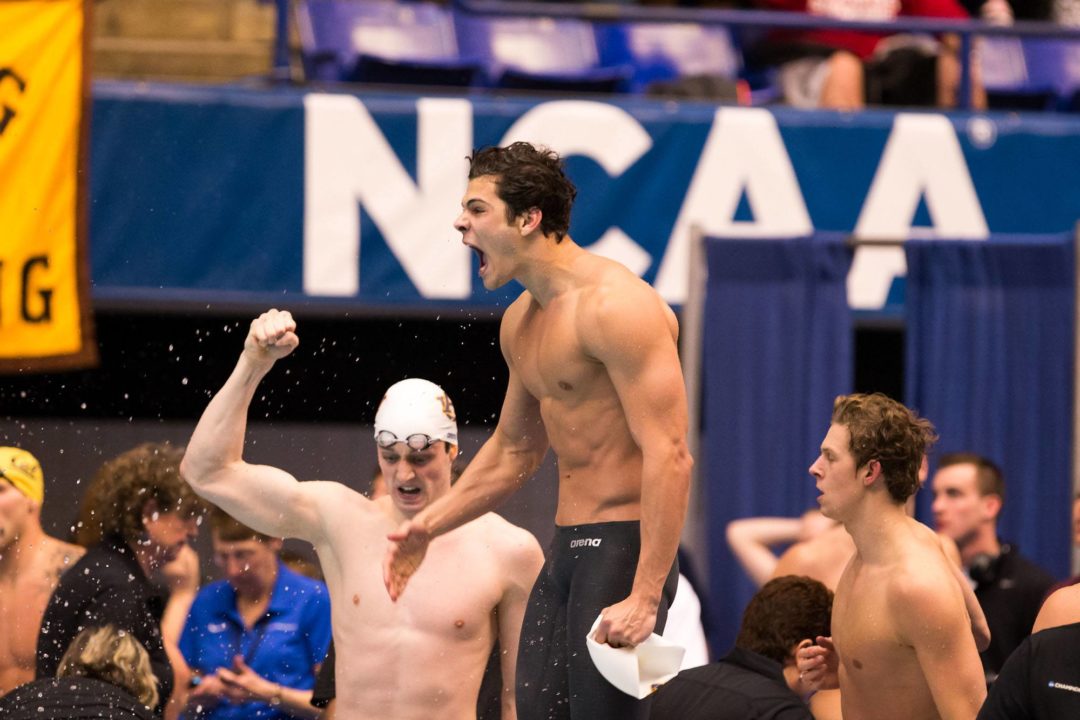This little fella originally appeared over at YourSwimBook.com. Join Olivier’s weekly motivational newsletter by clicking here.
What gets measured gets prioritized.
There are many reasons to measure your training in the water—it helps you stay motivated by showing you how far you’ve progressed, keeps you accountable to your goals, and can help you detect patterns and habits in your swimming that would otherwise go unnoticed.
The little bit of effort that it takes to measure and track your swimming can pay dividends in many ways, but none so much as this:
When something is being measured, it becomes a priority.
Again, with a different set of words for added emphasis…
By measuring the critical parts of your swimming you pay more attention to them.
Really, that simple.
Outside of total volume (which is not an accurate indicator of performance), here are some different ways to track and measure your swimming so that you not only stay focused and motivated, but ultimately swim faster:
1. Count your stroke rate and chase greater efficiency.
Swimming fast involves a host of different things: excellent technique, high levels of efficiency, and the mindful attention to consistently to focus on these things.
Having a target stroke rate, and consistently trying to make yourself efficient enough to shave one or two (without gliding for 3 seconds at the end of each stroke, obviously) strokes off per 50 is a simplified way to keep yourself on top of trying to move across the pool in the most economical way possible.
Get into the habit of counting and recording your stroke count and make a point to swim more efficiently in order to decrease it bit by bit.
2. Best times.
Are we talking about best times here?
Sort of.
What we are talking about are in-practice best times. (“We talkin’ ‘bout practice?”) It’s unrealistic to think that you are going to be able to swim best times consistently in a training environment, so instead have a list of training bests. These don’t have to be limited to just swim times, either.
Undoubtedly your coach has thrown together kick sets where you can see how fast you can belt out a 100 kick with a board, or how fast you can a 25 underwater dolphin kick.
Having this little list of in-practice bests gives you something that you can improve at your next practice, and gives you a nearly limitless set of targets and benchmarks to strive to beat on.
3. That old attendance thing. Kinda important.
If there is one thing you should be monitoring this year, it’s probably this one.
After all, the other metrics in this post hinge on this one determining number.
Tracking your attendance gives you a more realistic picture of how much training you are actually making. We tend to deflate the number of workouts we have missed over the months of the season. You remember the “occasional” missed workout, but if there is one “occasionally” missed workout per week they start to add up awfully fast.
My suggestion would be to try to hit perfect attendance for a week.
And then a second week.
And try to see how long you can get the perfect weeks of attendance going.
Doing it this way instigates the “don’t break the chain” effect that comes from being on a hot streak.
SEE ALSO: 8 Reasons a Swim Log Will Help You Swim Faster This Year
4. Grade your effort in the pool.
Okay, so let’s say you are making it to all of your workouts.
That’s great, right?
Olympic gold medal here we come.
On the other hand, it’s not so great if…
You are sandbagging the workouts. Or if you are spending half the workout hiding under the bulkhead from your coach. And not if you swim at half-effort on the main sets.
Want a simple way to keep yourself honest?
Rank each of your workouts by effort after you get out of the water. Doing this will have the curious effect of making you want to work harder so that you can earn that 8, 9 or even 10 out of 10.
5. The premium meters and yards.
All meters are not created equal.
Some are done for pure aerobic work, others are completed in order to facilitate a technique change. And then there are the ones where you are swimming at full speed.
The race pace stuff.
The meat and potatoes of your training.
Tracking these bad boys will give you a better idea of what kind of results you can expect at an upcoming meet, while also giving you a sneak peek at whether a big breakthrough is around the bend.
If you are banging out repeat after repeat of :13 second 25m butterfly, you will have the confidence to know that you should be able to belt out a heckuva fast 50 at your next meet.
Accuracy is pretty key here in terms of time-keeping, so get coach on board with helping you record your results.
Ready to Take Your Swimming to the Next Level?
 YourSwimBook is a log book and goal setting guide designed specifically for competitive swimmers. It includes a ten month log book, comprehensive goal setting section, monthly evaluations to be filled out with your coach, and more.
YourSwimBook is a log book and goal setting guide designed specifically for competitive swimmers. It includes a ten month log book, comprehensive goal setting section, monthly evaluations to be filled out with your coach, and more.
Learn 8 more reasons why this tool kicks butt now.
Join the YourSwimBook weekly newsletter and get motivational tips and more straight to your inbox. Sign up for free here.

War Eagle!